The WORST episodes of Bill Nye: The Science Guy
Every episode of Bill Nye: The Science Guy ever, ranked from worst to best by thousands of votes from fans of the show. The worst episodes of Bill Nye: The Science Guy!
Comedian/scientist Bill Nye stars as the host of this show designed to get kids interested in the science of everyday, and some not-so-everyday, things. On a full range of subjects, including ecology, biology, chemistry and physics, Nye gives an easy-to-understand, yet informative lesson that both kids and their parents can enjoy.
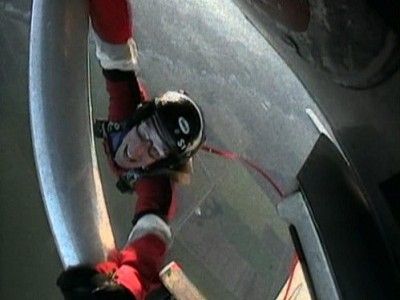
#1 - Wind
Season 2 - Episode 2 - Aired 2/25/1994
Some answers, my friend, do in fact, blow in the wind. A cool breeze is great on a hot summer day. A cold winter wind can chill you until you can't stop shivering. Where does all that wind come from? It starts with the Sun. Energy from the Sun warms the Earth and the atmosphere, the air, above it. As the world turns into darkness each night, the atmosphere cools off. The molecules in a mass of warm air are more spread out than the molecules of air in a cold air mass. So cold air is heavier than warm air. Cool air masses squeeze warm air up. That's why you may hear people say, "Warm air rises." The Sun warms the Earth with huge amounts of heat each day. And, the Earth is spinning. So, as air masses move up and down, they get nudged sideways along the Earth's surface at the same time. Try drawing a straight line on a spinning ball. It'll curve. The same thing happens to make wind. Air travels all over the Earth moving across deserts, up and down mountains, through val
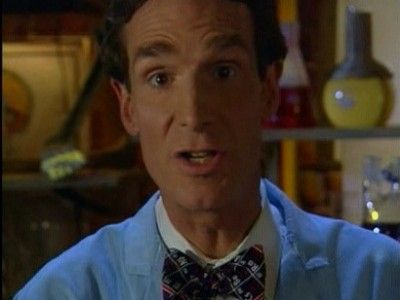
#2 - Atoms & Molecules
Season 5 - Episode 8 - Aired 11/28/1997
Atoms are reeeeally small. They are so small that you can’t see them with just your eye. It takes as many as 10 million of them side-by-side to measure a single millimeter. In fact, atoms are the smallest pieces of “stuff” that are still considered “stuff.” If you take something and break it into tiny pieces, and then break it into tinier pieces, and keep going, the smallest part you’d be left with (and still have the same substance that you started with) is an atom. Atoms are the building blocks of all matter. Everything is made of only 109 different kinds of atoms, called elements. 92 of these elements occur naturally, but the rest of them – ones like Technetium and Promethium have only been found in distant stars and Californium and Einsteinium – are only made in laboratories. A molecule is born any time two or more atoms combine together.

#3 - Communication
Season 2 - Episode 16 - Aired 11/12/1994
In this program, he points out the different ways in which humans and animals exchange information. He also talks about the ability of humans to store data in computers, books, and on videotapes.
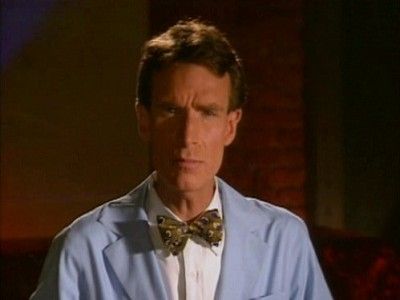
#4 - Momentum
Season 2 - Episode 17 - Aired 11/19/1994
The momentum of a moving thing, like you riding your bike, depends on how much mass you and your bike have and how fast you’re speeding down that hill. An elephant on a bike has more momentum than a mouse on a bike moving at the same speed. A mouse on a fast bike has more momentum than a mouse on a slow bike. If there’s an elephant on a fast bike, you’d better get out of the way.

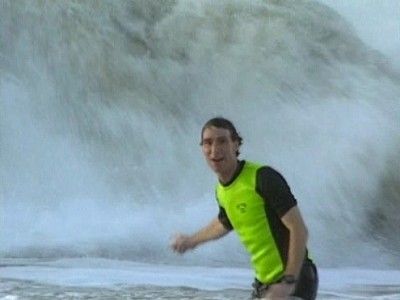
#6 - Waves
Season 3 - Episode 11 - Aired 4/21/1995
Energy, things like light, heat, and sound, moves in waves. You’ve probably seen waves in the ocean, or ripples when you throw a rock in a pond. Moving energy is not like the wave you do with your hand.

#7 - Wetlands
Season 3 - Episode 17 - Aired 10/6/1995
Wetlands are not just home to different animals and plants, but they also control flooding and help keep the Earth’s water clean. Flood waters move more slowly through wetlands because they have to go through barriers of plants and dirt. Wetlands help stop erosion because the plants stop the soil from washing away. Plants and soil in wetlands slow water enough that bacteria and other decomposer organisms can break down and even absorb some types of pollution. Wetlands are wet. Let’s keep them that way.

#8 - Respiration
Season 2 - Episode 20 - Aired 1/7/1995
How breathing supplies the body with the oxygen it needs

#9 - Oceanography
Season 2 - Episode 9 - Aired 9/24/1994
Surf's up! Get the current information as Bill Nye explains why oceans are salty and explores the ocean currents. Go with the flow of ocean currents with Bill Nye the Science Guy. Most of the Earth is covered with water - we're talking 71% of the entire Earth, and most of that water is in oceans. It depends how you count, but you can say that there are five oceans on Earth - the Atlantic, the Pacific, the Indian, the Arctic, and the Antarctic. They are all connected into one World Ocean by the flow of ocean currents. Ocean water is moving around all the time. Some of the moving water forms rivers in the ocean. Oceanographers, scientists who study oceans, call these rivers of ocean water "currents". Currents help sea animals move around, they bring up deep ocean water with lots of nutrients for small animals to eat, and they push warm and cold water around, creating different climates in the oceans. As the sea surface gets warmed by the Sun, water evaporates, but salt stays in the sea
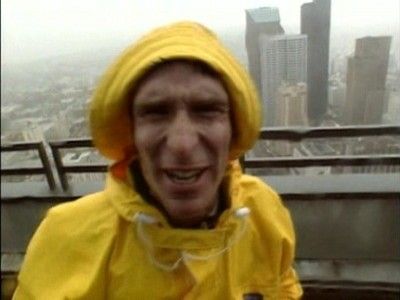
#10 - Atmosphere
Season 2 - Episode 19 - Aired 12/3/1994
The air that surrounds Earth is called the atmosphere. Compared to the size of the Earth, the atmosphere is very, very thin. It’s made from gases – mainly nitrogen, oxygen, and water vapor, with a little argon, carbon dioxide, xenon, neon, helium, and sulfur. The atmosphere does a lot for Earth. It blocks ultraviolet light and burns up a lot of meteors. It traps in heat, keeping Earth cozy. Even clouds are formed in the atmosphere – keeping the Earth wet with rain.

#11 - NTV Top 11 Video Countdown
Season 4 - Episode 5 - Aired 12/1/1995
Join Bill Nye as he counts down the hits from the Soundtracks of Science. Along with the music, Bill does a few new experiments on the lab bench. You’ll see the grunge band Nyevana’s classic “Air Pressure,” Momentisey’s “The Faster You Push Me,” and divas En Lobe’s “Whatta Brain.” There’s even a special appearance by Mudhoney, a real band from Seattle. But if you want to know who’s the number one artist from Not That Bad Records, you’ll have to tune in.
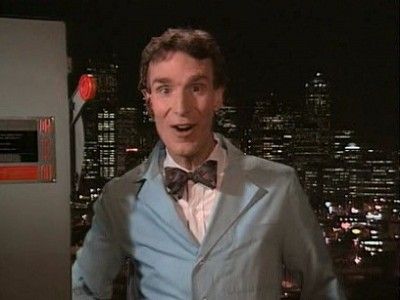
#12 - Electricity
Season 1 - Episode 18 - Aired 1/28/1994
It's time for Bill Nye to shed a little light on electricity. Electricity might seem mysterious, but once you understand the science the light goes on (so to speak). You flip a switch, and the lights turn on. You push the play button, and your personal stereo starts playing music. When you flip the switch or push play, you start a flow of electrons. Electricity is the flow of electrons, and electrons are very tiny charged particles. Electrons are found in atoms, the tiny pieces that all stuff is made from. We can make electrons flow in two ways. Batteries make electricity by mixing up chemicals -- making a chemical reaction that forces electrons to move in a path from the battery to the personal stereo and back to the battery. Electricity that turns on lights in your home is made by power plants. Most power plants use big machines called generators to make electrons by twirling wire in a magnet. The magnet makes electrons in the wire move around, creating electricity.

#13 - Patterns
Season 5 - Episode 18 - Aired 6/6/1998
Every time you look at something, hear something, touch something, smell something, or taste something, your brain collects a little information about the world around you. You may even have a scrapbook to store memories of some of that information. There’s a lot out there though. How do people sort out the valuable information from the not-so-valuable?
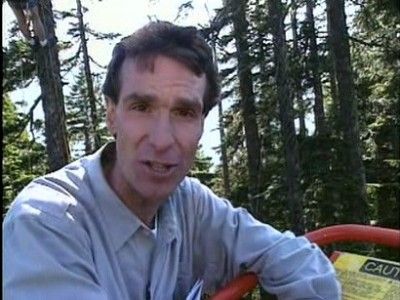
#14 - Forests
Season 2 - Episode 15 - Aired 11/5/1994
In Bill Nye the Science Guy: Forests, Nye shows students the levels of a forest, which include the canopy, the under story, and the floor. His special guest is Nalini Nadkarni, who has no qualms about going high up in the canopy to check out the wildlife and other happenings there
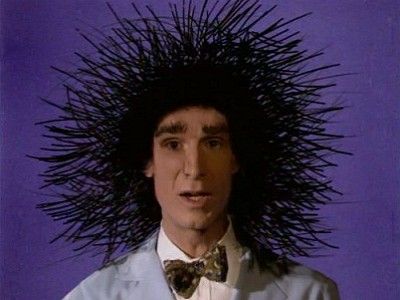
#15 - Static Electricity
Season 2 - Episode 5 - Aired 3/18/1994
Bill's all charged up about the "Static Electricity" show. It happens to all of us. You're causally walking along, maybe dragging your feet a little, when you reach out to shake a friend's hand and - ZAP! Both you and your friend get shocked. The spark is static electricity, a buildup of charged electrons. Electrons are a part of all atoms, the building blocks of all stuff, including you and me. All electrons have a negative charge. Negatively charged electrons push away from other negatively charged electrons. Like charges repel each other. When electrons build up in an area, a charge builds up, and it's just waiting to be released. This buildup of charge is called static electricity. Charges can jump around between things, especially when things are rubbed together. When you drag your feet on the carpet, electrons from the carpet jump onto you. As the charge builds up, the electrons get too close to each other, and they need a place to escape. They get their chanc
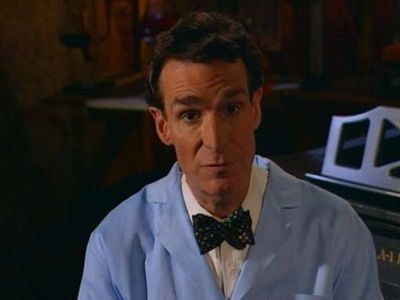
#16 - Science of Music
Season 5 - Episode 19 - Aired 6/13/1998
Music is the art and science of expressing ideas and feelings through sound. A sad song can say more about how someone feels than most words, and a familiar song can make crowds clap together and feel like one happy family. Whatever the emotion, music seems to have a way to communicate it. The music we listen to today is the result of years of experimentation with sounds. As people figured out what they liked best, they invented instruments that could play their favorite tones and developed popular rhythms, or patterns of beats. Each note of music, and every tone of each instrument is a sound wave. Some sound waves sound great together. Some not so good. Getting the exact soundwaves in the pattern you want – now that’s science.
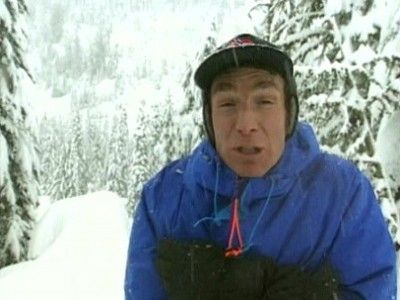
#17 - Climates
Season 3 - Episode 10 - Aired 4/14/1995
There are lots of different climates all over the world. Deserts are warm and dry. Temperate forests are cold and wet. Tropical rain forests are warm and wet. Animals and plants live in climates that are good places for them to live. Cacti wouldn’t grow too well in the Arctic, just like polar bears would over heat in the desert.

#18 - Plants
Season 3 - Episode 3 - Aired 1/28/1995
A plant’s recipe for food has only three main ingredients: sunlight, carbon dioxide, and water. When plants make their food, they give off what animals need – oxygen. Without oxygen, animals like us wouldn’t be able to breathe. If plants weren’t here on Earth, we wouldn’t be here.

#19 - Bones & Muscles
Season 2 - Episode 8 - Aired 9/17/1994
In this show, you can Bone up on Muscles. When you clicked on the Nye Labs web site to read this, you used your bones and muscles. Without them, you can't click, surf, or even sigh. Bones and muscles work together, or you aren't going anywhere. Muscles always pull, even when you push on something like a door somewhere in your body your arm and leg muscles are in tension. They are all attached to bones, and those bones are pushing; they're in compression. By pulling on bones you can breathe, talk, and move all over the world. Your bones support your weight like beams of steel or wood. They're stiff and strong. Rigid as they might seem though, they do flex. And, if you bang one hard enough, it swells up. You have a lump. That's because bones are full of blood vessels. Bones are not solid like rocks or skeletons in a dinosaur museum. Bones flex and grow. In fact, putting healthy amounts of stress on your bones is good for them. The flexing helps them get nutrients and
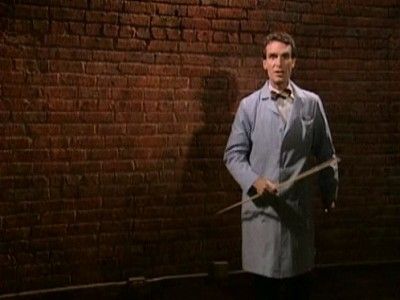
#20 - Cells
Season 1 - Episode 17 - Aired 1/21/1994
You can't see them, but they're everywhere even inside Bill Nye. This is not science fiction, it's the science of cells. All things that live are made from cells. You can't see them, but every part of your body, including everything inside your body, is made from cells. Cells eat, they grow, and they make more of themselves (what scientists call replicate). There are millions of different types of cells. Dog cells are different from fish cells. Bird cells are different from your cells. And inside your body, there are many different cells, each one doing a different job to keep your body going. Cells may be tiny, but without them, we'd be nothing.
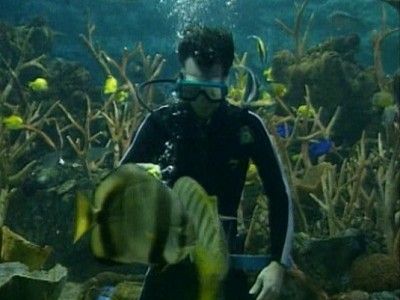
#21 - Fish
Season 3 - Episode 15 - Aired 9/22/1995
More than 22,000 different species of fish live in the oceans, lakes, and rivers of the world. Fish come in all shapes and sizes. Some eat water plants, some eat other fish. Lampreys and some jawless fish suck onto other fish for food. Stone fish live on ocean bottoms and camouflage themselves as rocks. Puffer fish blow themselves up like a balloon, only they’re covered with spines. There are tons of strange and cool-looking fish everywhere.

#22 - Buoyancy
Season 1 - Episode 5 - Aired 10/8/1993
A hot-air balln ride and a trip to the aquarium help Bill Nye explain why things float

#23 - Structures
Season 1 - Episode 14 - Aired 12/10/1993
Are you tense? Need some structure to your life? Then tune in to Bill Nye the Science Guy as he explains the science of structures. All structures give support or create a shape. You can find structures everywhere. Bridges, buildings, chairs, shoes, plants, spiderwebs, tables, and even your own body are all structures. A structure's shape, size, and what it's made of depend on what the structure does and how strong it needs to be. When structures give support, they either experience a pull (tension) or a push (compression). Structures in tension, such as ropes, cables, or blimps are made from stuff that is good at pulling. The materials in tension are usually thin. Structures under compression, such as elephant legs and courthouse columns, are made from hard stiff stuff. Compared to structures under tension, structures under compression are much thicker. When it comes to structures, form (the size and shape) depends on function (what it does). Build support for Bill
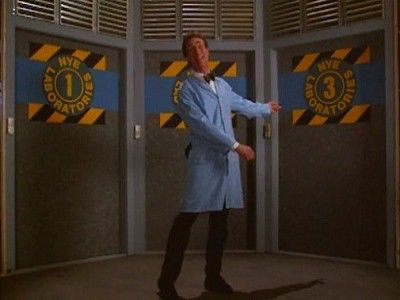
#24 - Probability
Season 4 - Episode 8 - Aired 1/19/1996
Probability is a way to measure how likely it is that something will happen. Probabilities are predictions. They’re often just very careful guesses. When a scientist wants to calculate a probability, she or he gathers data and then uses the data to make her or his guess. Probabilities are between 100% (it’s definitely going to happen) and 0% (forget about it, pal, it’s not going to happen). Most things have a probability somewhere in between.

#25 - Genes
Season 5 - Episode 3 - Aired 10/17/1997
The color of your eyes, the shape of your nose, and the straightness (or curliness) of your hair depend on your genes. Not jeans the pants, but genes, the long strands of chemicals in your cells. Genes are like a blueprint for your body, and your cells follow the blueprint to build you. All living things have genes in their cells. You get your genes from your parents – half from your mom and half from your dad. Your parents got their genes from their parents, your grandparents. Living things pass down their genes from generation to generation. Genes from a mother’s egg cell mix with genes from a father’s sperm cell to make a complete set of plans for a baby. Baby humans, baby dogs, and baby plants all grow up to look like their parents because of genes.